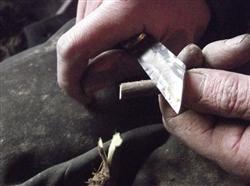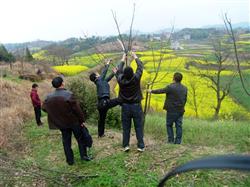How to control the chestnut peach borer?

How to control the chestnut peach borer? Please give guidance to Pyralidae, which belongs to Lepidoptera. The larvae eat chestnut fruit, accumulate insect droppings in the seeds, which is unedible, and cause fruit drop, which has a great impact on the yield and quality. The host also has peach, plum, pear fruit, sunflower disk, corn stalk and so on. The morphological adult is about 10 mm long, with yellow wings and many black spots. The growing larvae are about 30 mm long, with dark brown head, dark reddish brown chest and abdomen, and light green on the ventral side. There were 8 brown round hair slices on the middle, posterior chest and 1-8 ventral segments respectively. The ventral segment is grayish brown. The occurrence regularity is 5 generations in one year in Zhejiang. Overwintering with mature larvae, overwintering between the cracks in the warped bark of fruit trees, tree holes, the edge of terraced fields, fruit yards and the walls of warehouses. Pupation began in April of the following year. The first generation larvae are mainly harmful to peach fruits, a few to plum, pear and other fruits, most of the second generation larvae are still harmful to peach fruits, some of them are transferred to crops such as corn, and later generations are mainly harmful to chestnut, corn and sunflowers. Control methods: (1) clear the fallen fruit from the forest ground in winter, finish the treatment before April, and scrape off the old warped skin of the branches and stems of fruit trees and deal with them centrally to eliminate the overwintering larvae. (2) pick the fallen fruit, remove the insect fruit, and destroy it. (3) Pesticide control. Master the peak period of the third and fourth generation adults (late July and late August), with emphasis on spraying chestnut cattail. The effective agent can use 600 times of 30% fenitrothion EC, which is effective for eggs, larvae and adults. It is safe to spray this agent 20 days before fruit harvest. In addition, 40% dimethoate EC 800-1000 times, 2.5% deltamethrin 4000 times, and 80% dichlorvos EC 1500 times were also effective. As there are many hosts of peach borer, it is necessary to control peach borer not only on chestnut, but also on peach, plum, sunflower and other crops. Click to get more chestnut planting techniques click to get more fruit planting techniques
- Prev

When will the Chinese chestnut be grafted?
When will the Chinese chestnut be grafted? Please introduce the method that the grafting of Chinese chestnut is usually carried out in spring, but the survival rate of grafting in spring is not high due to the bad weather of low temperature and rain and man-made technical factors in spring. The author carried out grafting experiments in the summer of 2003-2005, and their survival rates were respectively.
- Next

How to trim the chestnut tree?
How to trim the chestnut tree? Please give guidance to chestnut trees can refer to the following methods for pruning: first, the tree shape of young tree pruning chestnut is mainly natural happy shape and trunk sparse layer shape. 1. Natural happy shape: this shape has no central stem, only 3 Mel 4 main branches, natural trunk oblique outward, crown short open.
Related
- Moge, come on! The staff of the peasant association in the producing area of cantaloupe were frightened when the crowd gathered.
- Causes and Solutions of low Fruit setting rate of Apple
- Symptoms and control measures of passion fruit virus disease
- Fruit growing lesson: how do apple orchards keep high yields?
- Can you build orchards in the mountains? What are the pros and cons?
- How to manage the coloring period of Crisson grape?
- This paper introduces the processing technology of two kinds of fig products.
- How much is a month for retired teachers in rural areas by 2020?
- How can strawberry planting increase sugar content? We should pay attention to management in many aspects.
- What are the cultivation techniques on how to improve the yield of golden fruit?

